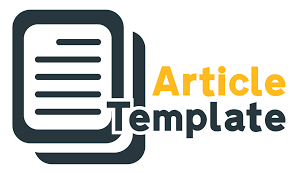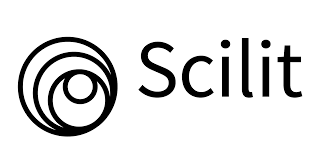Guidelines
- The manuscript is written in English, including research outcomes, field research or literary research and articles reflecting Communication phenomena.
- The manuscript is typed using Microsoft Word program on A4 size. The length of submitted paper is at least 7 pages and no more than 15 pages with standard margins (left limit and a lower limit of 4 cm, while the right limit and the upper limit of 3 cm). Editors will be evaluated if the papers are needing more pages than 15 pages. The Manuscript use of a word in Times New Roman size 12 pts and 1.15 space. Make sure that your paper is prepared using our template.
- Systematic research article is the title, author name (along with affiliation), abstract, abstract (with keywords), introduction, methods, results and discussion, conclusions, and reference.
- The writing system for research outcome consists of:
- The of title the article in the Indonesian no more than 14 words, whereas in English no more than 10 words. The title is written centered, font size 14 pts.
- The name of the author of the article are listed without an academic degree, with institution, and are placed below the article title. In the case of a script written by the team, editors relate only to the main author or authors whose names are listed in the first place. The main author must specify your e-mail address.
- Abstract , the length of each abstract 150-250 words, accompanied by a number of 3-5 words keyword. Abstract minimal contain the problem, objectives, methods, concepts, and results of research and discussion.
- The introduction to the article provides background research, the research context, the results of literature review and research purposes. The Introduction to Conceptual article contains a reference exposure problems context contain interesting things (controversial, unresolved, and new developments) and short formulation of the subject matter to be discussed. The entire introductory section presented an integrated way in the form of paragraphs, with a length of 15-20% of the total length of the article. Introductory part does not need to be given sub-title introduction.
- The part of method contains a paragraph about the study design, data sources, data collection techniques, and real data analysis conducted by researchers, with a length of 10-15% of the total length of the article.
- Section research shows exposure analysis results related to the research question. The discussion shows the meaning of results and comparisons with the theory and / or the results of similar studies. The core or conceptual discussion to article contains exposure study or thinking of the writer analytical, argumentative, logical, and critical. Exposure to load the establishment or attitudes discussion on issues pared writer. Long exposure to nuclear or discussion sections 60-80% of the length of the article.
- The conclusions, the affirmation of the establishment or the attitude of the author, and suggestions. Concluding presented in paragraph form. Long exposure to cover 10-15% of the length of the article.
- List of reference only contains the sources referenced in the article, and all the sources referred to should be listed in the reference list. Referral source at least 80% in the form of literature published 10 years. References used are primary sources in the form of research articles in journals or research reports (including thesis, dissertation).
- The journal recommends the use of electronic reference tools such as Mendeley and Zotero.
- References are arranged in a manner that refer APA Style 7th edition as the following example and described in alphabetical order. In direct citation, source should be written with the page number. Example: Baran (2009, p. 45).
Books:
Cunningham, S & Turner, G. (Eds.). (2002). The Media in Australia. Sydney, Australia: Allen & Unwin
Rogers, EM & Rekha, AR (1976). Communication in Organizations. New York, NY: The Free Press.
Darmawan, J. J. (2007). Mengkaji ulang keniscayaan terhadap berita (televisi). Dalam Papilon H. Manurung (ed), Komunikasi dan kekuasaan (h. 60-95). Yogyakarta, Indonesia: FSK.
E-book:
McRobbie, A. (1998). British Fashion Design: Rag Rade or Image Industry? London: Routledge. Available from http://leeds.etailer.dpsl.net/Home/htmlmoreinfo.asp?isbn=0203168011
Journal article:
Giroux, H. (2000). Public Pedagogy as Cultural Politics: Stuart Hall and the "crisis" of culture. Cultural Studies, 14 (2), 341-360.
Conference Papers:
Jongeling, SB (1988, September). Student teachers' preference for cooperative small group teaching. Paper Presented at The 3rd Annual 13 Research Forum of the Western Australian Institute for Educational Research, Murdoch University, Murdoch, Western Australia.
Articles in the Internet:
Massy, WF & Robert, Z. (1996). Using Information Technology to Enhance Academic Productivity. By (www.educom.edu/program.nlii/keydoces/massy.htm).
Newspaper article:
Ispandriarno, L. (2008, May 12). Green Bus Monitor. Koran Tempo, p. 4. Post / news in the newspaper without the author: Monitor bus. (2008, May 12). Koran Tempo, p. 4.
The official document:
Guidance and Development Center for Languages. (1978). Research Report Writing Guide. Jakarta: Department of Education. Law of the Republic of Indonesia Number 2 On the National Education System. (1990). Jakarta: PT Armas Duta Jaya.
Theses, Dissertations, Research Report:
Perbawaningsih, Y. (1998). Factors Influencing Attitudes and Behavior Against Computer Technologies: Comparative Analysis between Technology Culture Academics State Universities and Private, in the case of UGM and UAJY. (Unpublished thesis). University of Indonesia, Jakarta, Indonesia.
Website:
Arstechnica: The art of technology. (2008). Available from: http://arstechnica.com/index.ars Blog: Jaquenod, G. (2008, December 1). Birdie's Etsy Flights. [Web log post] http://www.giselejaquenod.com.ar/blog/ Film or Video: Deeley, M. & York, B. (Producers), and Scott, R. (Director). (1984). Bladerunner [Motion picture]. United States: Warner Brothers.
- Submitted works are original works of not plagiarism writers by completing plagiarism free statements. Manuscripts that have been published in this journal are not permitted to be sent to other journals.
- Before it is published, the editor has the right to change and improve the spelling, grammar, and grammar of the manuscript that is published without changing the contents and if necessary, the author is willing to show the complete data of his research.















